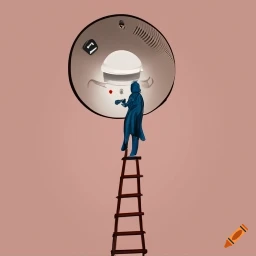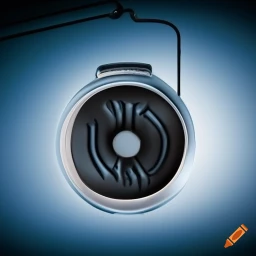Detect The Neglect: Why Keeping Your Smoke and Carbon Monoxide Detectors Tested Could Save Lives
Regularly testing your smoke and carbon monoxide detectors is crucial to ensure their functioning during emergencies. To maximize performance it is advisable to change the batteries and inspect the device, for any dust or debris that may affect its sensitivity. Moreover, if you move into a house it’s a decision to consider investing in new detectors.
Beeping Heroes: Understanding the Abilities of Smoke and Carbon Monoxide Detectors
accent heading
Smoke detectors are devices that produce an alarm when they sense the presence of smoke indicating a fire. On the hand, carbon monoxide detectors are specifically designed to identify the existence of carbon monoxide gas, which's both odorless and colorless but extremely poisonous. In order to detect smoke particles in the air smoke detectors utilize either ionization or photoelectric sensors. Carbon monoxide detectors on the hand rely on sensors to identify the presence of carbon monoxide gas. When exposed to carbon monoxide these sensors generate a current that triggers the alarm system.
Schedule inspection
Alarm Check, Life Check: The Importance of Keeping Your Smoke and Carbon Monoxide Detectors Up-to-Date
It is essential to test smoke and carbon monoxide detectors to ensure their functionality in case of an emergency. Smoke detectors usually have a test button that can be pressed to check if the alarm goes off. Homeowners should perform a test to verify that the detectors are operational. If the detector is connected to the system of the house it’s important to test the backup battery. Carbon monoxide detectors also have a test button that when pressed produces a beep or chirp sound indicating that the alarm system is working correctly.
Periodically testing the detectors holds importance for some reasons. Firstly it helps ensure that the batteries are fully charged and that the alarm will sound when smoke or carbon monoxide is detected. If during a test no alarm goes off it might indicate that cleaning or replacement of the detector is necessary. Secondly, regular testing allows homeowners to become familiar, with the sound of the alarm reducing panic and confusion during an emergency. This timely detection enables homeowners to evacuate quickly and, without harm.
Lastly, periodic testing can contribute to extending the lifespan of these detectors.
Regularly testing smoke and carbon monoxide detectors is crucial to keep them clean and free, from debris or dust that may disrupt their ability to detect smoke or carbon monoxide. It’s important to be proactive, in ensuring that the detectors are always functioning properly as a malfunctioning detector can waste both time and money.
To summarize homeowners should include testing smoke and carbon monoxide detectors as part of their maintenance routine. Devoting an amount of time and effort to test and maintain these devices could potentially save lives during an emergency situation.
Detecting Danger: A Complete Guide to Various Types of Smoke and Carbon Monoxide Detectors
There are types, styles, and sizes of smoke and carbon monoxide detectors available, in the market. They are designed to provide levels of protection for homeowners. Let’s take a look at some of the detector options;
1. Smoke detectors; These detectors utilize a sensor to identify the presence of smoke or other combustible particles in the air. They are particularly effective at detecting burning fires like those caused by smoldering furniture or overheated wiring.
2. Ionization smoke detectors; These detectors employ an ionization chamber and a small amount of material to detect smoke particles. They excel at identifying burning fires, such as those caused by burning paper or grease fires.
3. Dual sensor smoke detectors; These detectors combine ionization sensors to provide coverage for different types of fires.
4. Smart smoke detectors; By connecting to your home’s Wi-Fi network these detectors can send alerts directly to your smartphone or other devices allowing you to monitor the safety of your home remotely.
5. Carbon monoxide detectors; Specifically designed for detecting carbon monoxide gas in the surrounding air these devices serve as safety measures.
These variations, in detector types, give homeowners options that cater specifically to their needs and ensure safety within their homes.
They employ a sensor to identify the gas, which may arise from gas appliances, furnaces, or generators.
6. Detectors that combine carbon monoxide and smoke detection technologies; These detectors merge the capabilities of detecting both carbon monoxide and smoke to provide safety, against fire and gas hazards.



Knowing When to Retire Your Protectors: Understanding the Life Expectancy of Smoke and Carbon Monoxide Detectors
Smoke detectors and carbon monoxide detectors are safety devices that need maintenance to work effectively. As time goes by these devices can become less reliable due, to aging and wear and tear. So it’s important to know how long these detectors typically last to ensure they function properly.
In general smoke detectors usually have a lifespan of around ten years while carbon monoxide detectors can last up to seven years. However, the specific lifespan may vary depending on the model and type of detector you have. It’s always an idea to check the manufacturer’s instructions for an estimate of how your device will last.
Once the recommended time frame has passed it is essential for homeowners to replace their smoke detectors and carbon monoxide detectors in order to maintain their effectiveness.
Furthermore, if your smoke or carbon monoxide detector gets damaged malfunctions, or fails during a test it is crucial that you replace it promptly. Regularly checking the expiry date and testing your devices are steps in safeguarding your family and property, against emergencies caused by smoke or carbon monoxide.
The Little Alarms That Cried Wolf: Troubleshooting False Alarms with Smoke and Carbon Monoxide Detectors
Smoke detectors and carbon monoxide detectors are devices that can save lives by alerting you to the presence of gases and smoke. However, they can sometimes be bothersome if they start giving alarms.
If you encounter alarms from your smoke or carbon monoxide detectors the first step is to figure out what’s causing them. Common reasons, for alarms include battery levels, dust or other particles interfering with the sensor, or even cooking fumes triggering the smoke alarm.
If the cause of the alarm isn’t obvious or persists it’s advisable to reach out to a certified technician who can inspect the device and determine if it requires repair or replacement.
Always treat every alarm seriously even if it turns out to be an alarm. Follow the instructions provided by the manufacturer for testing and maintenance to ensure that your device functions correctly, in case of an emergency. Additionally, make sure you regularly replace batteries in your detectors as low battery power can lead to device malfunctions or false alarms.
accent heading
Smoke Signals: Where in Texas Homes You Need to Install Smoke Detectors
In Texas, it is necessary to have smoke detectors, in parts of your home depending on its size and type. As a rule, Texas law mandates the installation of smoke detectors in each bedroom outside every sleeping area, and on every floor of the house including basements. Different cities and counties may have requirements so it's important to consider local regulations. Additionally, fire departments often recommend placing smoke detectors in areas that are at higher risk for fires like kitchens, garages, and utility rooms. Remember to check your guidelines to ensure you comply with Texas laws regarding smoke detectors, in properties.
Call Us
Don't Be A Gas, Get A Detector: The Importance Of Installing Carbon Monoxide Detectors In Your Home
The National Fire Protection Association advises that every household, with fuel-burning appliances, such as gas stoves, furnaces, and fireplaces should have one carbon monoxide detector. It is also recommended to install detectors in homes with garages or use gas-powered generators or heating systems. Following the manufacturer’s instructions and complying with building codes are essential, for the installation of these detectors.
Staying Prepared: The Importance of Backup Batteries in the Event of Power Outages, Daylight Savings Time, and Other Factors
Power outages, changes, in daylight savings time, and various other factors can all have an impact on the effectiveness of smoke and carbon monoxide detectors. These factors influence the power source of these devices, which’s crucial for their operation. Let’s explore some of these factors and how they can affect smoke and carbon monoxide detectors.
When there is a power outage, smoke and carbon monoxide detectors that are connected to a home’s system may not function properly. However many detectors now come equipped with batteries to ensure operation during such situations. It is important to make sure that your detectors have batteries and regularly check their battery levels. Follow the manufacturer’s instructions, for battery replacement.
Daylight savings time adjustments may also impact the functioning of smoke and carbon monoxide detectors. Detectors that rely on being hardwired may require reprogramming after a power outage or a DST change. It is crucial to check the detectors after events to ensure they are working as intended.
Installing New Devices in Your Home Choosing the Right Type of Device for Your Home
Don't Panic: What to Do When Smoke and Carbon Monoxide Alarms Go Off
Smoke alarms and carbon monoxide detectors are designed to alert you to dangers, in your home. If the alarm goes off it’s crucial to know how to respond in order to keep yourself and your family safe. Here’s what you should do if either the smoke alarm or the carbon monoxide detector is triggered;
1. Stay calm; The sound of an alarm can be startling. It’s important to stay composed and focus on ensuring everyone well being.
2. Evacuate immediately; When you hear the alarm evacuate the building without delay. Get everyone out of the house quickly as possible. Call emergency services if needed.
3. Determine the source; outside try to identify where the alarm is coming from. If it’s a carbon monoxide detector, do not re-enter the house until a professional has confirmed it is safe.
4. Check your devices; If your alarm is due to smoke check for any signs of smoke or fire. If there are none inspect the detector to see if it requires batteries, cleaning, or replacement.
5. Seek assistance; If you’re unsure about what steps to take don’t attempt to handle the situation. Reach out for help soon, as possible.
Smoke alarms and carbon monoxide alarms have a role, in maintaining the safety of homes and protecting against fire and dangerous gas threats. It is vital to test and maintain these devices to ensure they function properly during times of need. Additionally always remember to seek assistance, in case of an emergency.
Alertness is Key: The Vital Importance of Smoke and Carbon Monoxide Detectors in Safeguarding Your Home and Family

